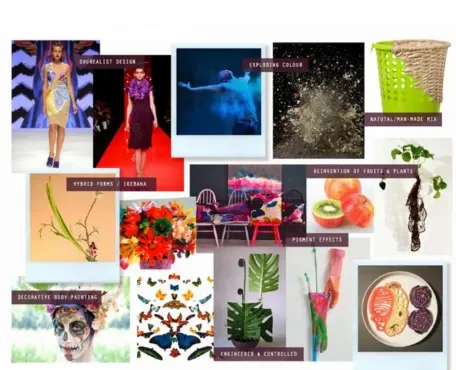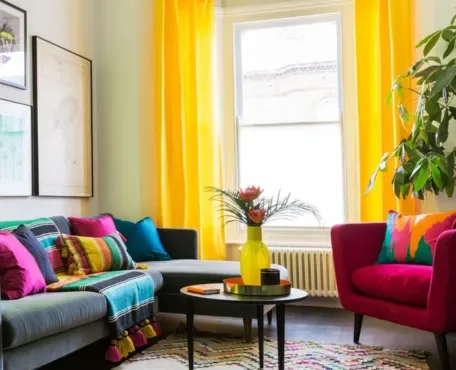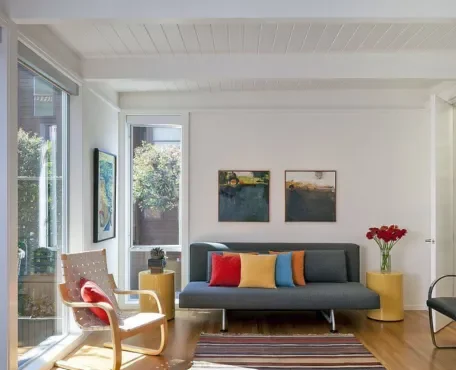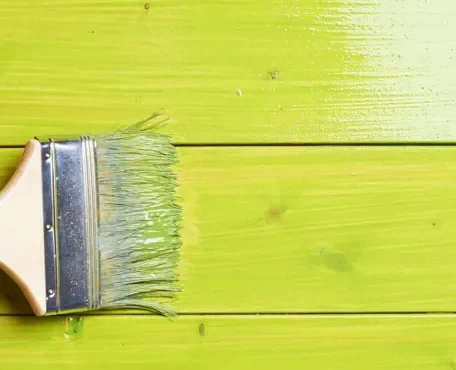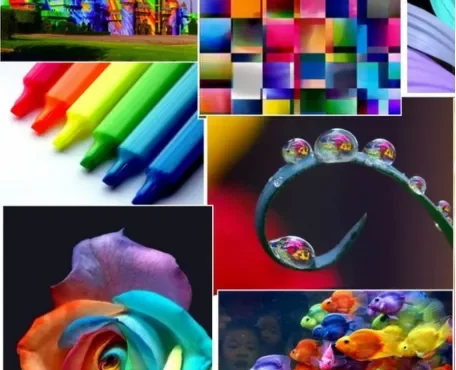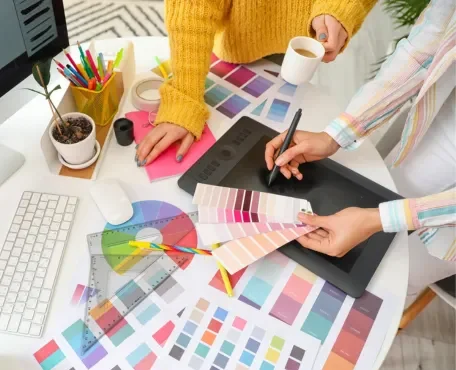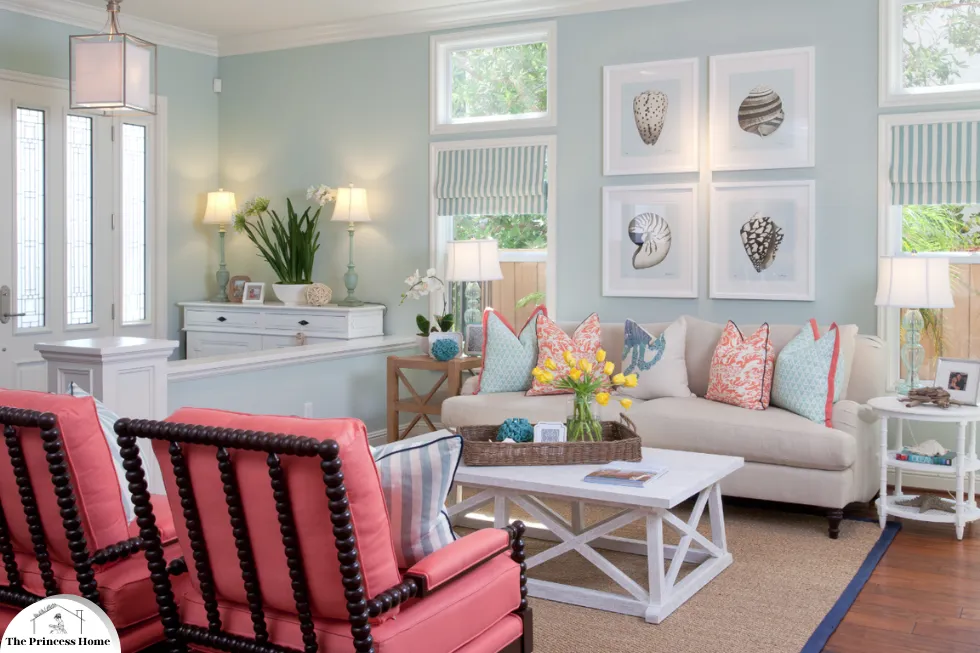
The perception of space within interior design is not solely determined by physical dimensions but is also influenced by factors such as lighting, furniture arrangement, and color choices. Among these elements, color plays a particularly powerful role in shaping how we perceive the size and atmosphere of a room. By strategically selecting and applying colors, designers can create optical illusions that make rooms appear larger, airier, or cozier and more intimate.
In this article, we explore the principles and techniques of using color .
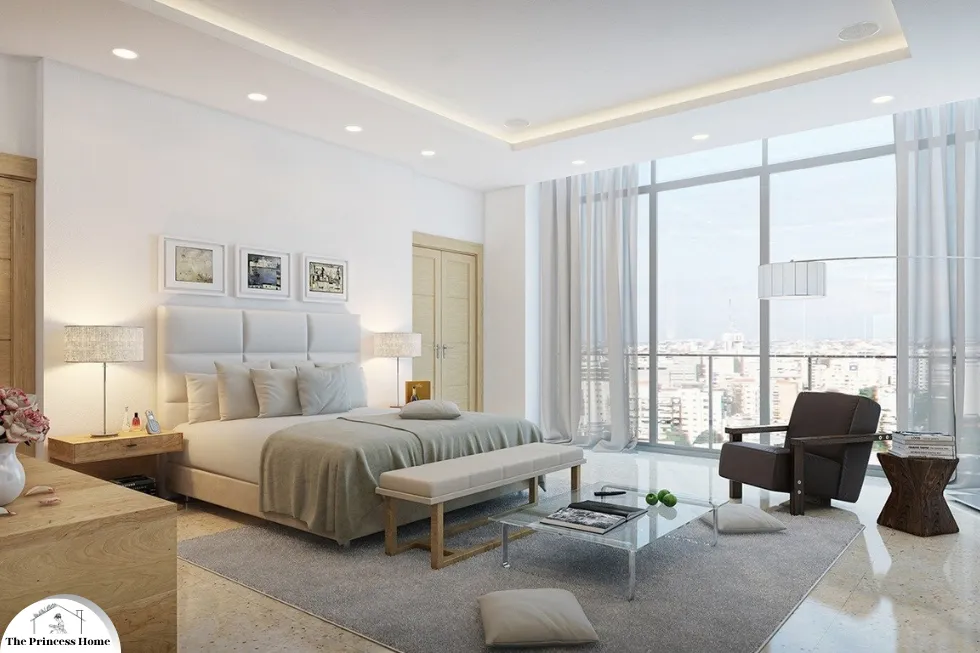
1.*Understanding Color Perception:
Color perception is subjective and can be influenced by factors such as lighting, texture, and context. However, there are general principles that govern how colors interact with the human eye and brain, affecting our perception of depth, volume, and distance within a space.
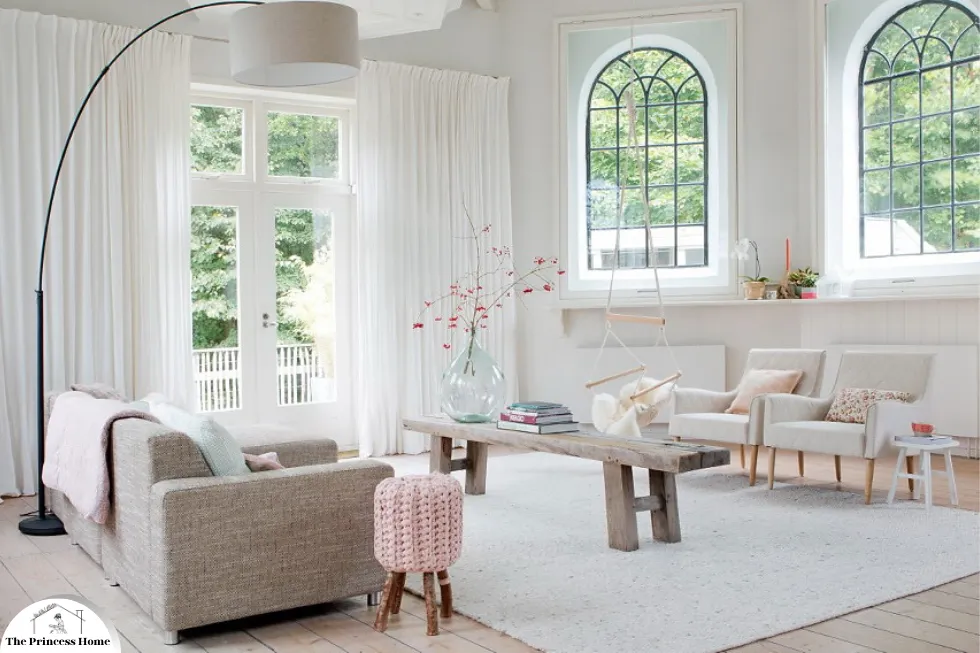
1.Light colors
Light colors, such as soft neutrals, pastels, and whites, are known for their ability to reflect light and create a sense of openness and expansiveness. When applied to walls, ceilings, and floors, light colors can visually enlarge a room by bouncing light around, making it feel brighter and more spacious. Additionally, light-colored surfaces tend to recede visually, creating the illusion of greater depth and distance.
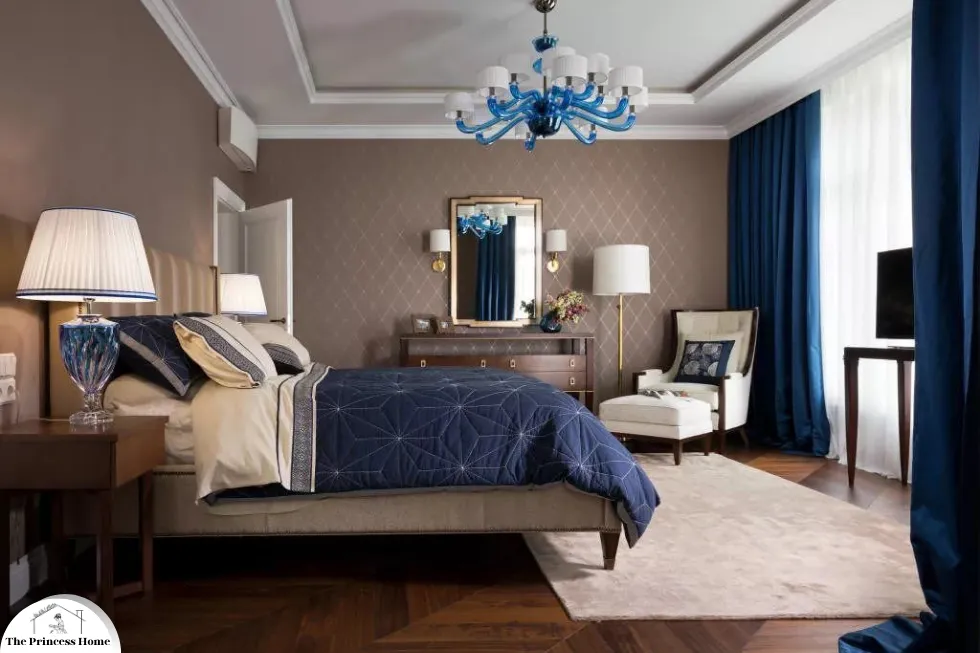
2.Dark colors
Conversely, dark colors, including deep blues, rich browns, and charcoal grays, absorb light and create a sense of coziness and intimacy. While dark hues can make a space feel smaller and more enclosed, they also add depth and warmth, making rooms feel snug and inviting. By strategically incorporating dark accents or feature walls, designers can create focal points that draw the eye and add visual interest without overwhelming the space.
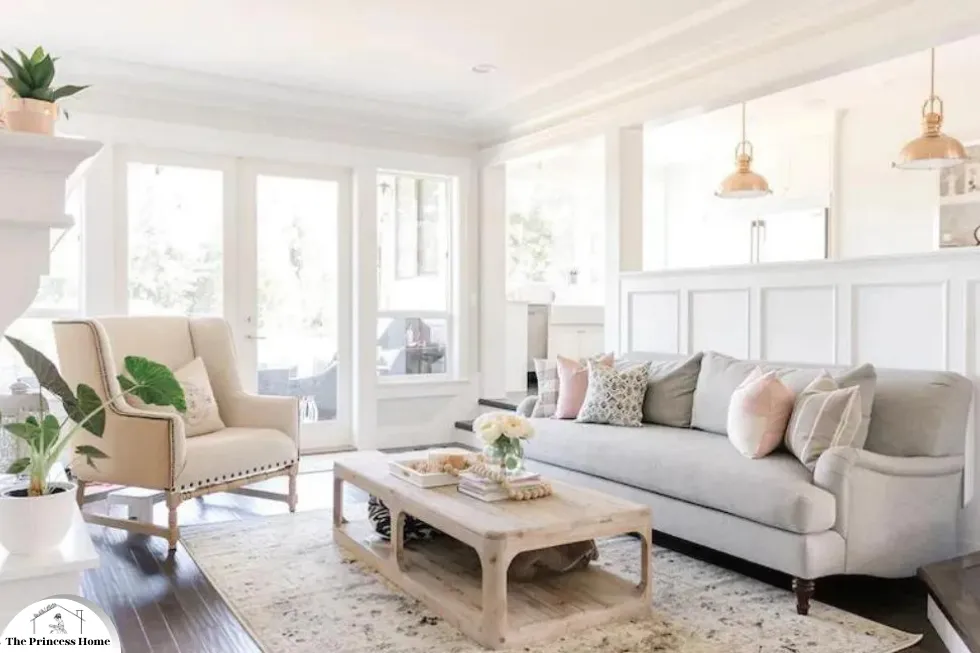
2.*Expanding Small Spaces:
In rooms with limited square footage, maximizing the perception of space is essential to prevent them from feeling cramped or claustrophobic. Light, airy colors are the go-to choice for expanding small spaces, as they reflect light and create a sense of airiness and openness.
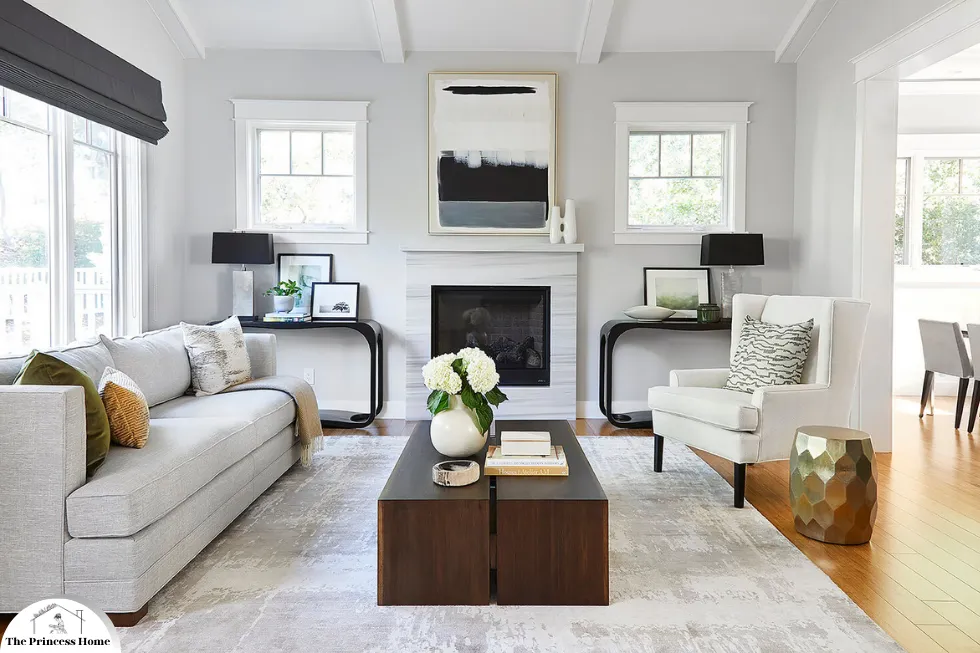
1.Light-colored
Walls painted in soft shades of white, cream, or pale gray can visually push back the boundaries of a room, making it appear larger and more expansive. To enhance the illusion of space, designers can extend light-colored hues to ceilings and floors, creating a seamless flow that amplifies the sense of height and width. Additionally, using a monochromatic color scheme—where walls, trim, and furnishings are all in similar shades—helps eliminate visual clutter and creates a unified, cohesive look that enhances the feeling of spaciousness.
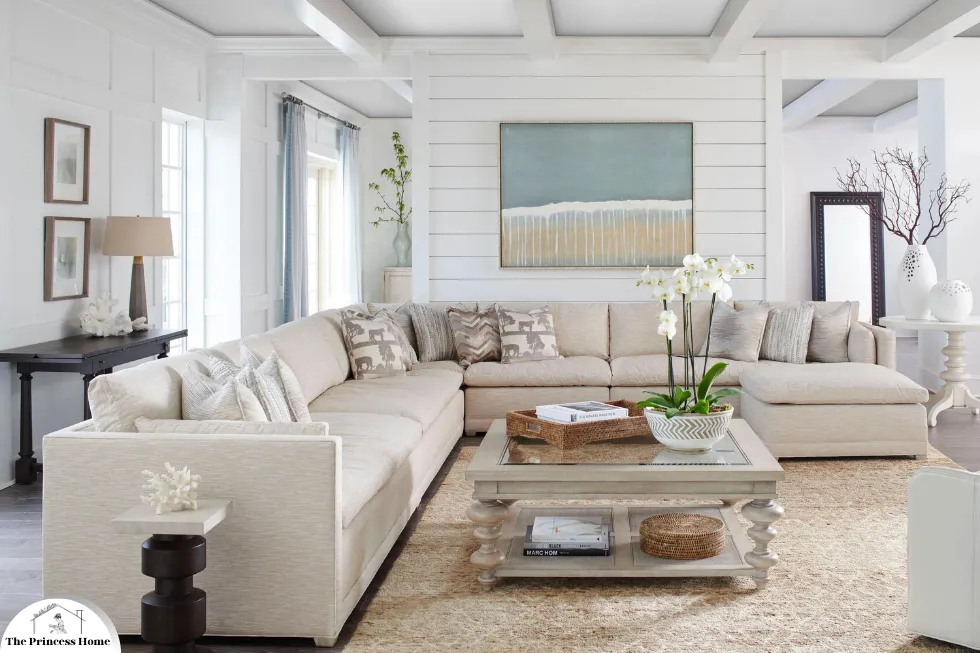
2.Reflective surfaces
To further enhance the perception of space, designers can utilize reflective surfaces such as mirrors, glass tabletops, and glossy finishes to bounce light around and create visual depth. Strategic placement of lighting fixtures, such as recessed ceiling lights or wall sconces, can also help illuminate dark corners and create a more even distribution of light throughout the room.
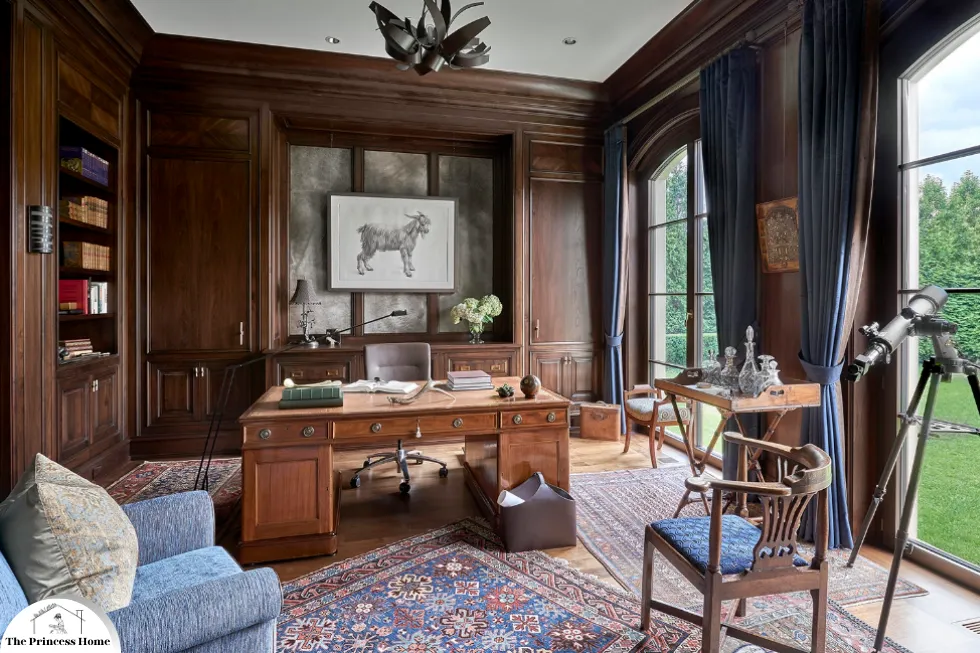
3.*Creating Cozy Intimate Spaces:
1.Darker &richer colors
While expanding small spaces is a common design challenge, creating a sense of coziness and intimacy in larger rooms presents its own set of opportunities and considerations. Darker, richer colors are the key to achieving this effect, as they absorb light and create a sense of warmth and enclosure.
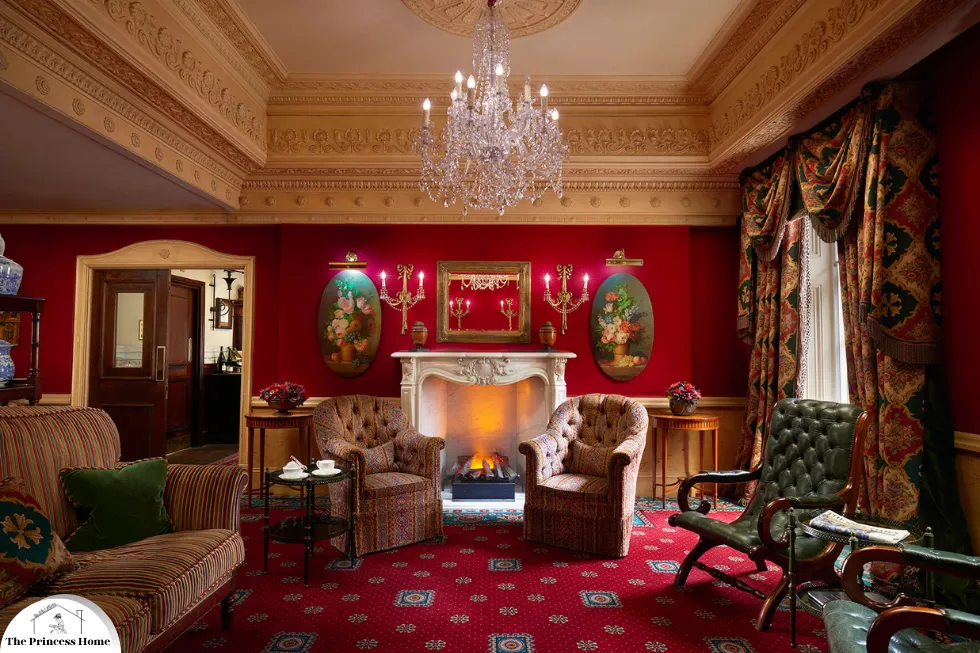
2.Feature colors
In expansive living rooms or open-plan spaces, designers can use dark accent walls or feature colors to anchor the room and create focal points that draw the eye. Deep blues, forest greens, and warm burgundies are popular choices for creating a sense of drama and sophistication, while also imbuing the space with a sense of intimacy and comfort.
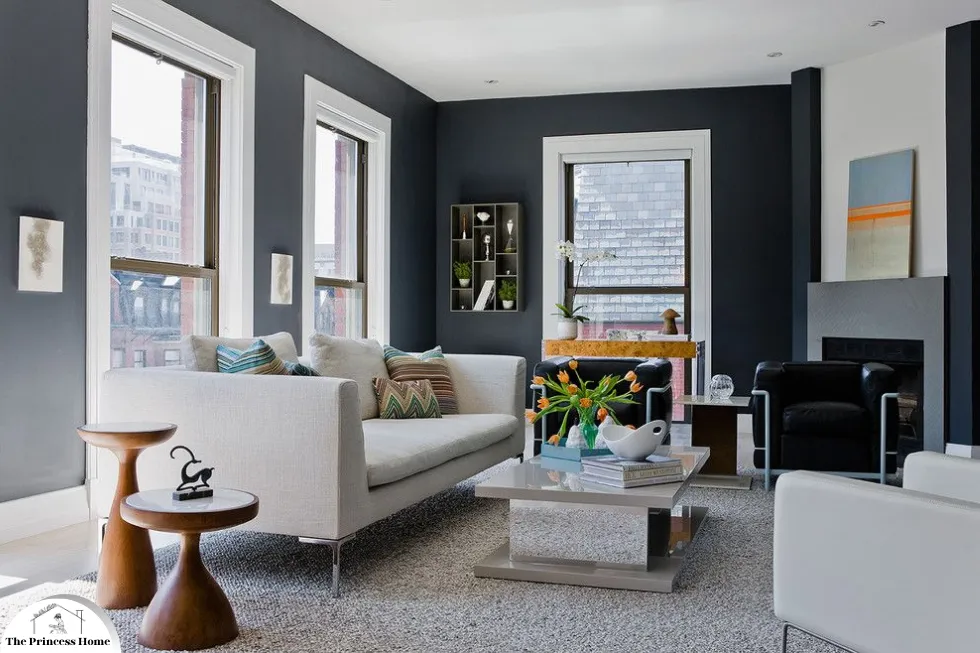
3.Balance colors
To prevent dark colors from overwhelming the room, designers should balance them with lighter hues and ample natural or artificial lighting. For example, pairing dark walls with crisp white trim or light-colored furnishings creates a striking contrast that adds visual interest and prevents the space from feeling too heavy or oppressive. Similarly, incorporating plenty of lighting sources, such as floor lamps, table lamps, and pendant lights, helps illuminate dark corners and create a cozy, inviting atmosphere.
Conclusion:
Color is a versatile tool that designers can leverage to manipulate the perception of space within interior design. Whether it’s expanding cramped quarters or creating a sense of intimacy in vast areas, the strategic use of color can dramatically alter how we experience and interact with our surroundings. By understanding the principles of color perception and applying them creatively, designers can transform even the most challenging spaces into inviting, functional environments that cater to the needs and preferences of their occupants.
Frequently Asked Questions about Using Color to Enhance Space Perception:
1. How can light colors make a room appear larger?
Light colors, such as soft neutrals and pastels, reflect light and create a sense of openness and expansiveness. When applied to walls, ceilings, and floors, light colors bounce light around the room, making it feel brighter and more spacious. Additionally, light-colored surfaces visually recede, creating the illusion of greater depth and distance.
2. What are some tips for expanding small spaces using color?
To expand small spaces, consider using light, airy colors like white, cream, or pale gray on walls, ceilings, and floors. Extend the color scheme throughout the room for a cohesive look and eliminate visual clutter. Utilize reflective surfaces like mirrors and glass to bounce light and create depth. Strategic lighting placement can also help illuminate dark corners and evenly distribute light.
3. How can dark colors create a cozy atmosphere in larger rooms?
Dark colors, such as deep blues and rich browns, absorb light and create a sense of warmth and intimacy. In larger rooms, use dark accent walls or feature colors to anchor the space and create focal points. Balance dark hues with lighter tones and ample lighting sources to prevent the room from feeling heavy or oppressive.
4. Can the perception of space be enhanced without painting walls?
Yes, there are other ways to enhance space perception besides painting walls. Utilize furnishings and decor in light or dark colors to create contrast and visual interest. Incorporate reflective surfaces like mirrors and glossy finishes to bounce light and create depth. Strategic lighting placement, such as recessed ceiling lights or wall sconces, can also help illuminate dark corners and enhance the overall perception of space.
5. Are there any color combinations that work best for enhancing space perception?
For expanding small spaces, sticking to light, monochromatic color schemes is often effective. Using varying shades of the same color creates a seamless flow that amplifies the sense of height and width. In larger rooms, balancing dark accent colors with lighter hues creates contrast and visual interest while maintaining a cozy atmosphere. Experiment with different color combinations to find what works best for your specific space and design preferences.


